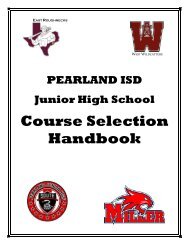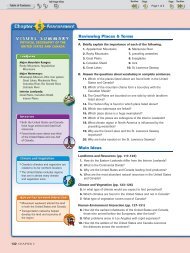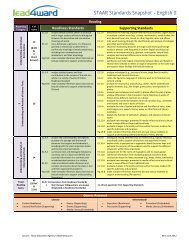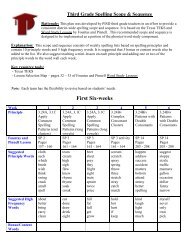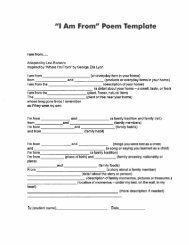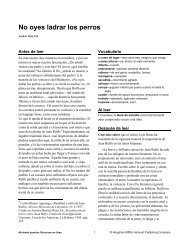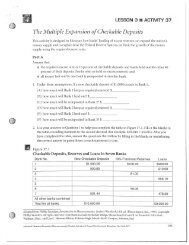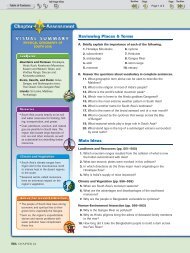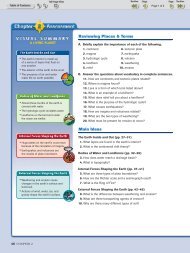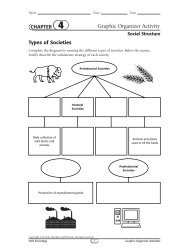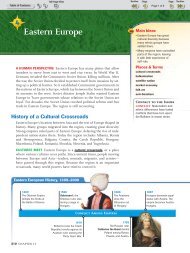Reviewing Places & Terms Main Ideas - WinterWorld
Reviewing Places & Terms Main Ideas - WinterWorld
Reviewing Places & Terms Main Ideas - WinterWorld
You also want an ePaper? Increase the reach of your titles
YUMPU automatically turns print PDFs into web optimized ePapers that Google loves.
152-153-Chapter6 10/16/02 10:19 AM Page 152<br />
HUMAN GEOGRAPHY OF<br />
THE UNITED STATES<br />
• The United States was populated by<br />
a diverse group of immigrants.<br />
• The United States expanded<br />
westward and industrialized.<br />
• The government of the United States<br />
is a representative democracy.<br />
• At the start of the 21st century, the<br />
United States was the only remaining<br />
superpower.<br />
• Fertile land, valuable resources, and<br />
good location help make the United<br />
States an economic leader.<br />
• Much of the U.S. economy is based<br />
on service industries.<br />
• Most of the U.S. population lives in<br />
urban areas.<br />
The Northeast region is heavily<br />
populated and industrialized.<br />
The Midwest produces a variety of<br />
agricultural and manufactured<br />
goods but is shifting to some<br />
service industries.<br />
The South is rapidly becoming more<br />
industrialized.<br />
The West is a rapidly growing<br />
economic region.<br />
<strong>Reviewing</strong> <strong>Places</strong> & <strong>Terms</strong><br />
A. Briefly explain the importance of each of the following.<br />
1. migration 6. service industry<br />
2. Columbian Exchange 7. postindustrial economy<br />
3. suburb 8. multinational<br />
4. representative democracy 9. megalopolis<br />
5. free enterprise 10. metropolitan area<br />
B. Answer the questions about vocabulary in complete sentences.<br />
11. What role did migration play in populating the United States?<br />
12. What are some examples of items in the Columbian Exchange?<br />
13. Which of the above terms are associated with urban geography?<br />
14. What type of government does the United States have?<br />
15. What is an advantage of free enterprise?<br />
16. How are the service industry and postindustrial economy related?<br />
17. What is an example of a service industry?<br />
18. What makes a business a multinational corporation?<br />
19. In which region is an example of a megalopolis found?<br />
20. How are the terms suburb and metropolitan area related?<br />
<strong>Main</strong> <strong>Ideas</strong><br />
History and Government of the United States (pp. 135-139)<br />
1. Why is the United States called a “nation of immigrants?”<br />
2. How did the Louisiana Purchase change the United States?<br />
3. What factors led the United States to become a superpower?<br />
Economy and Culture of the United States (pp. 140-144)<br />
4. Why is the United States a leader in agricultural production?<br />
5. What are some examples of the cultural diversity of the United<br />
States?<br />
6. In what industry do most Americans work?<br />
Subregions of the United States (pp. 145-151)<br />
7. What changes have taken place in the industrial base of the<br />
Northeast?<br />
8. What role did water play in the development of the Midwest?<br />
9. What industries are found in the South today?<br />
10. How did California become the nation’s most populous state?<br />
152 CHAPTER 6
152-153-Chapter6 10/16/02 10:19 AM Page 153<br />
Critical Thinking<br />
1. Using Your Notes<br />
Use your completed chart to answer these questions.<br />
History<br />
and Government<br />
Economy<br />
and Culture<br />
The<br />
United States Subregions<br />
a. What resources have been important in the<br />
development of the United States?<br />
b. Which subregions make up the “rust belt” and<br />
which the “sunbelt”? How are they related?<br />
2. Geographic Themes<br />
a. REGION How has the economy of the South<br />
changed?<br />
b. MOVEMENT How has U.S. population shifted since<br />
the country began?<br />
Geographic Skills: Interpreting Maps<br />
3. Identifying Themes<br />
How did air conditioning and irrigation change the<br />
population of the West? Which of the five themes apply to<br />
this situation?<br />
4. Determining Cause and Effect<br />
What was the effect of the United States becoming<br />
industrialized?<br />
5. Making Generalizations<br />
What has been the result of the United States being<br />
populated by many different groups of people?<br />
Additional Test Practice,<br />
pp. S1–S37<br />
TEST PRACTICE<br />
CLASSZONE.COM<br />
US & CANADA<br />
U.S. Population and Geographic Centers<br />
Use the map at right to answer the following<br />
questions.<br />
1. MOVEMENT In which year did the population<br />
center cross the Mississippi River?<br />
2. MOVEMENT How would you describe<br />
the difference between changes in the<br />
geographic center and changes in the<br />
population center?<br />
3. REGION In which region was the population<br />
center from 1790 through 1850?<br />
Create a series of four maps showing<br />
movement of the population center of<br />
the United States in 50-year periods.<br />
Use the map on this page to help<br />
you. Start with the period from 1790<br />
to 1840.<br />
1959<br />
Rapid<br />
City<br />
TEXAS<br />
N. DAKOTA MINN.<br />
S. DAKOTA<br />
NEBRASKA<br />
Omaha<br />
1848<br />
KANSAS<br />
Kansas<br />
City<br />
OKLAHOMA<br />
Geographic center<br />
Population center<br />
IOWA<br />
Des Moines<br />
1846<br />
1845<br />
WISCONSIN<br />
1803<br />
1920<br />
1910<br />
1900<br />
1890<br />
1880<br />
1870<br />
ILLINOIS<br />
1960<br />
St.<br />
1930<br />
Louis<br />
1990<br />
1980 1970 1940<br />
KENTUCKY<br />
2000<br />
1950<br />
MISSOURI<br />
TENNESSEE<br />
ARKANSAS<br />
LA.<br />
0<br />
250 500 miles<br />
0 250 500 kilometers<br />
Azimuthal Equal-Area Projection<br />
MISS.<br />
IND.<br />
MICH.<br />
ALA.<br />
CANADA<br />
1860<br />
1850<br />
1840<br />
OHIO<br />
GEORGIA<br />
PENN.<br />
Philadelphia<br />
1790<br />
DEL<br />
MD.<br />
Washington, D.C.<br />
W.<br />
VA.<br />
VIRGINIA<br />
1830<br />
1820<br />
1810<br />
NEW<br />
YORK<br />
S. CAROLINA<br />
1800<br />
N. CAROLINA<br />
Use the links at classzone.com to do research about<br />
the expansion of the United States. Look for the dates<br />
when territory was added to the United States.<br />
Writing About Geography Write a report about your<br />
findings. Include a map showing the territory acquired to<br />
help present the information. List the Web sites that were<br />
your sources.<br />
Shaping an Abundant Land 153



